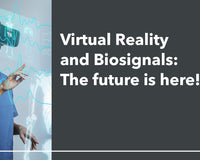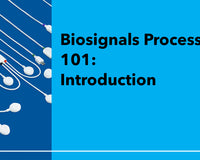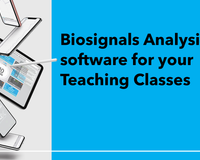Introduction
Welcome to the final chapter of our biosignal processing blog series. Through this series we moved from understanding noise sources and mastering pre-processing to feature extraction using real-world signals and laid the foundation for deciphering intricate physiological signals. Now, we bridge theory with real-world applications.
Our exploration of biosignal processing has provided us with the tools to extract valuable insights from the midst of noise and interferences. In this concluding post, we dive into concrete examples from users' research papers, showcasing how these principles are translating into practical solutions.
Get ready to witness biosignal processing in action, where theory meets application, unlocking hidden narratives within physiological signals. We hope that these examples will inspire you to explore your own applications of biosignals processing!
Making computers accessible through muscle activity
Imagine the challenges individuals confront when using computers with limited physical mobility. This study seeks a helpful tool for this by employing Electromyography (EMG) sensors to record arm muscle activity to translate them into mouse clicks.

R. Widodo et al. combined muscle activity data with two Machine Learning methods (K-Nearest Neighbor and Support Vector Machines) to acquaint the computer with this new ‘language’ of muscle signals. The researchers experimented with diverse techniques to enhance the computer's comprehension of the provided data. The outcome? Success, as the computer adeptly distinguished users' intent correctly for left or right clicks by merely interpreting their muscle signals up to 85% of the times.
This study underscores how muscle sensors and sophisticated biosignal processing techniques hold the power to revolutionize computer use for individuals with restricted mobility. With ongoing experimentation and data analysis, the future possibilities are plenty for new computer-interfaces to emerge.
Find out more about this creative approach in the researcher’s published research paper.
Tracking the impact of Mindfulness on stress reduction
Exploring the influence of Mindfulness meditation—a mental practice involving being fully present and aware of the moment—on emotional processing has gained popularity as an effective method for stress reduction. Newcomers to this practice often seek guidance through mindfulness apps that provide exercises and tools for tracking their experiences, primarily relying on self-reporting mechanisms.
The following study conducted by P. Correia et al. used Electrodermal Activity (EDA) sensors to gain an objective perspective beyond self-reports during a 12-Week Mindfulness-based stress reduction course.

During this course EDA sensor data was recorded and analyzed with the findings revealing significant changes, including longer response times and lower values in EDA measurements like amplitude and skin conductance level. These changes suggest that the participants became less responsive to external triggers and experienced improved emotional well-being.
In addition, an intriguing gender-based pattern emerged, showcasing that women displayed better stress management post-Mindfulness practice as compared to their male counterparts. Through this exploration of Mindfulness meditation's impact on emotional processing through a physiological lens, the study deepens our comprehension of its profound effects.
Learn more about this research in the researcher’s published paper.
Not enough use cases? Find more in our collection of biosignals publications.
Close-Up
As we conclude our Biosignals Posts journey, we've explored the intricacies of biosignal processing. From understanding the basics to real-world applications, we've unraveled the power of processing physiological signals.
We've witnessed how this knowledge translates into real-world playlists, through improving your Spotify playlist, making computers more accessible, and many other use cases. But (y)our journey doesn’t end here. It's a reminder of the vast potential biosignal processing holds in various fields and how much we have yet to explore and uncover.
May these posts be a helpful and inspiring guide to your next biosignals projects and you can always count on us to provide you the best tools available to turn your project idea into reality.










